Non-Killing Geographies
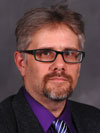
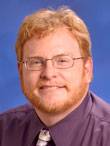
This column is written with a very heavy heart, coming just several days after the deadly mass shooting at the Marjory Stoneman Douglas High School in Parkland, Florida. The massacre ended the lives of 17 students and staff, injured dozens, and left behind many traumatized survivors, as well grieving friends, families, and community members. Counted among the murdered was Scott Beigel, a geography teacher and cross country coach at the high school, who heroically lost his life providing students with shelter from the gunman’s bullets.
This tragedy, which sadly has become just the latest in now a long and growing line of school shootings in the United States, drew significant expressions of sadness and anger from AAG members, our governing Council, and the wider geography community. On behalf of the Association, I express heartfelt sympathy to the victims of the Parkland school shooting. I also demand in the strongest possible terms that U.S. federal, state, and local government officials be tireless and unflinching in examining what can be done to eliminate the pervasiveness of violence not only in schools but across the nation’s communities. Thankfully the news industry has cast a significant spotlight on the massacre in Parkland, but there are scores of neighborhoods, workplaces, campuses, and other spaces and lives marked by this and other forms of violence, much of it going under-reported and under-analyzed.
Disciplinary response to the Florida murders remains very fluid as many of us in the AAG consider the most appropriate way to memorialize Scott Beigel and all the victims and survivors of the shooting. No doubt, this will be the subject of conversations at the AAG Council’s upcoming spring meeting in New Orleans. There is also considerable ongoing discussion among geographers about the impact that this tragedy will have on broader social discussions and debates about gun reform, school safety, mental health, and the responsiveness (or lack thereof) of some government authorities to the precarity of human life. The outrage and political activism recently demonstrated by the surviving students of Stoneman Douglas High School suggest these debates will remain highly charged for some time and rightly so.
While these aforementioned issues cannot be settled overnight, I do feel responsible as AAG President to reflect upon what these recent horrific events might mean for our discipline and our Association. In particular, I would like to use this column to suggest that while a growing number of geographers are engaged in a critical study of violence, it should become an even more central theme within geographic research, teaching, community engagement, and other disciplinary initiatives.
Throughout my tenure as AAG President, I have forwarded efforts to make Geography REAL, that is, responsive, engaged, advocating, and life-improving. As we work to further enhance our discipline’s responsiveness to critical issues and its commitment to the welfare of people and their social and natural environments, geographers can and should play an important role in better understanding the place of violence—and its many forms, causes, and consequences—within contemporary society and space.
In writing monthly columns, I frequently reach out to colleagues with expertise that I don’t have. In the wake of the Parkland massacre, I reached out to newly selected AAG Fellow, James “Jim” Tyner, who has written several books and important articles on the relationship between space, society, and violence. The position of AAG Fellow is meant not only to honor distinguished scholars but to create a cohort of experts and mentors who can advise on AAG strategic directions and assist in responding to grand challenges. Jim and I are united in believing that violence represents one of those grand challenges.
For the remainder of this column, Jim and I shift, perhaps awkwardly but by necessity, to joining voices in a collaborative way. In particular, we wish to offer some initial ideas of what the discipline can offer or contribute, and then what specific role the AAG and its members might play in the study and prevention of “killing geographies” and the advocacy of “non-killing geographies.”
Myriad Geographies and Victims of Violence
Simon Springer recently argued that violence sits in places—a phrase that effectively captures the myriad geographies of violence. The tragedy in Parkland, Florida has called attention both to gun violence and to school shootings. Sadly, there are innumerable other killing geographies that remain off the radar and thus fail to garner political attention. Existing proposals, however well intentioned, to provide additional security to schools will do nothing to prevent the next ‘Aurora’ or ‘Las Vegas’ massacre. The (impractical) proposal to arm teachers not only will not keep students safe at school; it will in no way afford protection to children from violence that happens when they go to the movies, eat at the mall, ride their bicycles to the park, or simply drive and walk through their policed communities. Nor will any of these measures address the now-routine litany of shooting deaths that take place, by accident or intention, in the home. Domestic violence, as Rachel Pain has argued, is a form of “everyday terrorism” that like global terrorism is related to “attempts to exert political control through fear.”
We must acknowledge also that it is not only our children at risk to ever-increasing forms of direct violence. Our mothers and fathers, brothers and sisters, friends and co-workers remain vulnerable to premature death. Journalists, politicians, and environmental activists are targets of assassination and forms of violent intimidation. Alt-right attacks on scholars, including some of our colleagues in geography, have resulted in not only criticism and defamation of their research but also in social media trolling, harassment, and even death threats. It prompts a sober discussion, one that has yet to happen among AAG leaders, about what professional societies, universities, and programs can do to safeguard and support faculty and students in the face of this aggression.
Mass shootings, whether at schools, shopping malls, theaters, or open-air concerts, constitute spectacular forms of direct violence. As a discipline, Geography would be remiss to concentrate solely on these moments to the neglect of other forms of structural violence that come from the harm and neglect inflicted by social institutions and governmental policies and spaces. Ruth Wilson Gilmore, for example, has encouraged us to see the role that ever increasing rates of mass incarceration play in inflicting a wider organized, legalized violence and abandonment upon people of color, who are disproportionately represented in America’s prisons. Congressional in-action in the promotion of gun control is matched by a concomitant in-action toward the provision of health-care and welfare. Budget cuts aimed at reductions in food stamps and health insurance prove no less deadly to the human body than a bullet from an AR-15. To date, many geographers have made considerable contributions; but more can and should be done.
A beginning point in the promotion of non-killing geographies is to confront directly the socio-spatial organization of violence: the spaces where violence takes place and those affected. Violence has important geographic consequences; it reshapes people’s perceptions of and interactions with places as well as their survivability and sense of belonging within those places. Violence is produced through social relations and interactions, some very intimate and others more distant. But violence is always social and always coded by dominant ideas and vulnerabilities related to ‘race,’ gender, class, nationality, and so on. To this end, solutions to violence must necessarily address the social milieu of prejudice, hatred, and xenophobia, but also the more banal indifference toward others.
Studying and Preventing Violence as an AAG Initiative
What role can, and should, the AAG perform in studying violence and advocating for non-killing geographies? An obvious call is to promote research. Drawing on a multitude of quantitative and qualitative methodologies, including GIS, participatory mapping, and ethnographies, geographers are well-trained to provide theoretical insight and empirical documentation of wide ranging forms of violence. Recent evidence suggest great potential for such analysis. Geographers at the University of Utah recently mapped and conducted a spatial analysis of hate groups in the U.S., while Kent State’s GIS / Health and Hazards Lab teamed up with officials in Akron, Ohio to study the impact of violence on children in the city.
Geographers can provide a much-needed spatial awareness to violence, namely the scalar connections of violence ranging from the body to the global political economy. The spatiality of violence demands analysis from any number of sub-fields within the discipline, including environmental geographers who could shed significant light on what Rob Nixon calls the “slow,” gradual violence “wrought by climate change, toxic drift, deforestation, oil spills, and the environmental aftermath of war.” Devoting one of the featured themes of an upcoming AAG meeting to violence and non-killing geographies would be an ideal place to start building such a focused initiative, organizing networks of collaboration among academics and advocacy organizations, and drafting traditional publications as well as white papers to inform public policy.
Research does not occur in a vacuum, but is positioned within and actively shaped by the social and political conditions that can either facilitate or hinder certain avenues of research. Indeed, detailed understandings of gun violence—to take but one example—have been hamstrung by a lack of sufficient federal support. As The Washington Post and criminal justice professor Lacey Wallace reported in the immediate aftermath of the Las Vegas mass shooting, large scale gun violence research has been largely stymied since 1996, when the National Rifle Association (NRA) pressured congressional leaders to place restrictions on the ability of the Centers for Disease Control (CDC) to fund scholarship that would “advocate or promote gun control.” The measure had a “chilling ripple effect” across other federal agencies and private foundations, leaving scholars not to mention lawmakers with “little up-to-date data about what causes gun violence or how it can be prevented or reduced.” As geographers ramp up their research on violence, it is quite likely that AAG’s growing strides in monitoring, analyzing, and making interventions in public policy on Capitol Hill will be important in calling on national leaders to permit and facilitate research on gun control, gun violence, and other violence-related topics, such as intimate partner violence and hate-crimes.
The Association, with its growing support of outreach and communication, is in a key position to help geographers speak with wider audiences about the spatiality of violence and move toward the training of geography faculty and students as “scientists-advocates.” As explained in a recent presidential column, “advancing ‘awareness’ is too passive of an idea to capture the kind of broader and deeper public investment in geography that needs to occur.” It is necessary, following the Past President Glen MacDonald, for the AAG to initiate and support efforts of a “transformative” nature, that is, the promotion of non-killing geographies. This is a tall order—one that entails a sustained commitment to advocacy on behalf of victims of violence and toward the prevention of violence. Specific proposals include the advocacy of non-violence and non-killing geographies during Geography Awareness Week, the greater development of college geography courses on violence, the hosting of workshops and teach-ins not only on campuses, but beyond, to include K-12 institutions, places of worship, and other public forums.
AAG might consider supporting the compilation and dissemination of data and research on violence; such materials, in line with existing efforts by the Association, would include a variety of outreach-related publications, brochures, handouts, and multimedia tools. And we can think bigger: The AAG could establish a clearinghouse on geographies of violence, a repository for journalists, politicians, academics, and activists to learn about the study and prevention of violence as well as what a geographic perspective can lend to such work. From our perspective, the resource would appear to have a natural connection with the Association’s long-time focus on human rights.
Efforts are already underway within the AAG to develop a “culture of mentorship,” including for example the establishment of the Susan Hardwick Excellence in Mentoring Award, the AAG Department Leadership Workshop, the AAG-ESRI ConnectED GeoMentors Program, the Women’s Mentoring Network, and the AAG Fellows Program. There is a rich opportunity for geographers to expand our understandings of mentorship in light of a greater sensitivity to violence and victims, such as partnering with the Scholars at Risk (SAR) program. Scholar At Risk is an advocacy network that provides institutional support to those scholars “suffering grave threats to their lives, liberty and well-being by arranging temporary research and teaching positions at institutions in [the SAR] network as well as by providing advisory and referral services.”
In closing, geographers are encouraged to consider the promotion of non-killing geographies as one of the discipline’s and society’s grand challenges and to reflect on what role they and the AAG might play in studying, preventing, and speaking out against violence. Cultivation of non-violence feels like an insurmountable issue, especially in light of the loss of life and the political debates surrounding Parkland massacre, but there is arguably no more important task confronting Geography. And there can be no greater way to remember the sacrifice of Scott Beigel, a fellow geography educator who gave his life to save his students from violence.
No doubt, there are some readers of this column already making important contributions in scholarly and public understanding of geographies of violence and non-killing. Share these contributions and any other ideas and opinions by email or on Twitter using #PresidentAAG.
— Derek Alderman, AAG President
University of Tennessee
Twitter: @MLKStreet
Email: dalderma [at] utk [dot] edu
— James Tyner, AAG Fellow
Kent State University
Twitter: @Tynergeography
Email: jtyner [at] kent [dot] edu
DOI: 10.14433/2017.0028
 I am sure many of you know of the strong allegations that Mr. Donald Trump—frustrated with a bipartisan immigration proposal—argued that America needs more immigrants from places like Norway and fewer from Haiti, El Salvador and African nations, which the President reportedly called “shithole countries.” More than mere “locker room cartography,” as one late night comic put it, the President’s harmful words project a racialized map of the world that represents Haitians, Salvadorians, and Africans not only as unwelcomed, but also as inferior. By reducing countries and an entire continent to a pejorative label, Mr. Trump denies the complexity, dignity, and richness of life in these countries and the creative resilience and resistant survivability that have always existed amid and in opposition to political oppression and poverty.
I am sure many of you know of the strong allegations that Mr. Donald Trump—frustrated with a bipartisan immigration proposal—argued that America needs more immigrants from places like Norway and fewer from Haiti, El Salvador and African nations, which the President reportedly called “shithole countries.” More than mere “locker room cartography,” as one late night comic put it, the President’s harmful words project a racialized map of the world that represents Haitians, Salvadorians, and Africans not only as unwelcomed, but also as inferior. By reducing countries and an entire continent to a pejorative label, Mr. Trump denies the complexity, dignity, and richness of life in these countries and the creative resilience and resistant survivability that have always existed amid and in opposition to political oppression and poverty. The Preliminary Program for #AAG2018 has been released! The online searchable program includes a preliminary agenda of sessions, plenary speakers, and specialty group meetings. You can browse the schedule by author, title, keyword, sponsor group, theme and day.
The Preliminary Program for #AAG2018 has been released! The online searchable program includes a preliminary agenda of sessions, plenary speakers, and specialty group meetings. You can browse the schedule by author, title, keyword, sponsor group, theme and day. With the release of the 2018 AAG Annual Meeting Preliminary Program, now is the best time to book your travel to New Orleans. The AAG is pleased to partner with United Airlines, Amtrak, and Super Shuttle to help
With the release of the 2018 AAG Annual Meeting Preliminary Program, now is the best time to book your travel to New Orleans. The AAG is pleased to partner with United Airlines, Amtrak, and Super Shuttle to help The National Center for Research in Geography Education (NCRGE) is pleased to announce keynotes by Nora Newcombe and David Lambert for a special track of geography education sessions during the 2018 AAG Annual Meeting in New Orleans. Nora Newcombe’s lecture, “GPS in Our Heads: What Do Behavioral and Neural Data on Navigation Offer to Geography Educators?”, engages the long and controversial proposal that humans can develop cognitive maps of their environment. Following Newcombe’s lecture, David Lambert will deliver a lecture entitled “Nurturing the ‘Garden of Peace’: Powerful Geographical Knowledge and the Pursuit of Real Education.”
The National Center for Research in Geography Education (NCRGE) is pleased to announce keynotes by Nora Newcombe and David Lambert for a special track of geography education sessions during the 2018 AAG Annual Meeting in New Orleans. Nora Newcombe’s lecture, “GPS in Our Heads: What Do Behavioral and Neural Data on Navigation Offer to Geography Educators?”, engages the long and controversial proposal that humans can develop cognitive maps of their environment. Following Newcombe’s lecture, David Lambert will deliver a lecture entitled “Nurturing the ‘Garden of Peace’: Powerful Geographical Knowledge and the Pursuit of Real Education.”
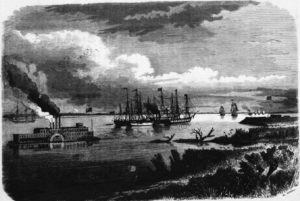
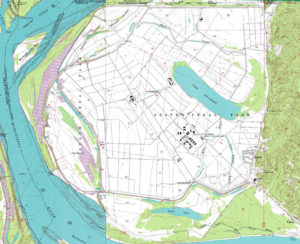

 The American Association of Geographers congratulates the individuals named to receive an AAG Award. The awardees represent outstanding contributions to and accomplishments in the geographic field. Formal recognition of the awardees will occur during the
The American Association of Geographers congratulates the individuals named to receive an AAG Award. The awardees represent outstanding contributions to and accomplishments in the geographic field. Formal recognition of the awardees will occur during the  The AAG is excited to have two new interns join our staff for the Spring 2018 semester. Laura Akindo, graduate of Frostburg State University, and Hannah Ellingson, sophomore at The George Washington University, will both be assisting staff on a variety of internal projects in addition to the 2018 AAG Annual Meeting.
The AAG is excited to have two new interns join our staff for the Spring 2018 semester. Laura Akindo, graduate of Frostburg State University, and Hannah Ellingson, sophomore at The George Washington University, will both be assisting staff on a variety of internal projects in addition to the 2018 AAG Annual Meeting.
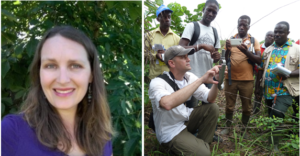 Each month, learn more about the field of geography from people who are working in it! This month, AAG talked to Leslie McLees, Undergraduate Coordinator & Instructor at the University of Oregon Department of Geography, and Pete Chirico, Research Geographer & Associate Director of the Eastern Geology and Paleoclimate Science Center at U.S. Geological Survey. Both discussed the need for effective communication skills on the job market and their passions for geography.
Each month, learn more about the field of geography from people who are working in it! This month, AAG talked to Leslie McLees, Undergraduate Coordinator & Instructor at the University of Oregon Department of Geography, and Pete Chirico, Research Geographer & Associate Director of the Eastern Geology and Paleoclimate Science Center at U.S. Geological Survey. Both discussed the need for effective communication skills on the job market and their passions for geography.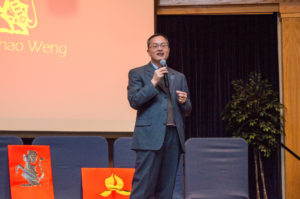 The Institute of Electrical and Electronics Engineers (IEEE) has named geographer and long time AAG Member, Qihao Weng to its list of fellows. Weng has been a professor at Indiana State University since 2001 where his research focuses on urban remote sensing. The author of 210 articles and 10 books, Weng is the 2015 AAG Willard and Ruby S. Miller Award recipient.
The Institute of Electrical and Electronics Engineers (IEEE) has named geographer and long time AAG Member, Qihao Weng to its list of fellows. Weng has been a professor at Indiana State University since 2001 where his research focuses on urban remote sensing. The author of 210 articles and 10 books, Weng is the 2015 AAG Willard and Ruby S. Miller Award recipient.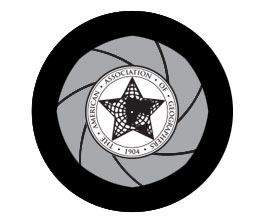 Looking to learn more about the four scholarly journals published by the AAG throughout the year? In this month’s AAG Snapshot, delve into the academic publishing sphere as AAG Publications Director Jennifer Cassidento shares tidbits about the Annals of the American Association of Geographers, The Professional Geographer, GeoHumanities, and The AAG Review of Books!
Looking to learn more about the four scholarly journals published by the AAG throughout the year? In this month’s AAG Snapshot, delve into the academic publishing sphere as AAG Publications Director Jennifer Cassidento shares tidbits about the Annals of the American Association of Geographers, The Professional Geographer, GeoHumanities, and The AAG Review of Books! Volume 6, Issue 1 of The AAG Review of Books has now been published online. In this first issue of 2018 be sure to check out the discussions of Concrete Revolution: Large Dams, Cold War Geopolitics, and the US Bureau of Reclamation, Degraded Work: The Struggle at the Bottom of the Labor Market, and Cities in Global Capitalism.
Volume 6, Issue 1 of The AAG Review of Books has now been published online. In this first issue of 2018 be sure to check out the discussions of Concrete Revolution: Large Dams, Cold War Geopolitics, and the US Bureau of Reclamation, Degraded Work: The Struggle at the Bottom of the Labor Market, and Cities in Global Capitalism.
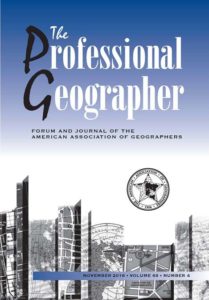 The Professional Geographer, Volume 70, Issue 1, has been published. The focus of this journal is on short articles in academic or applied geography, emphasizing empirical studies and methodologies. Volume 70, Issue 1 includes a focus section entitled: Critical Data, Critical Technology.
The Professional Geographer, Volume 70, Issue 1, has been published. The focus of this journal is on short articles in academic or applied geography, emphasizing empirical studies and methodologies. Volume 70, Issue 1 includes a focus section entitled: Critical Data, Critical Technology.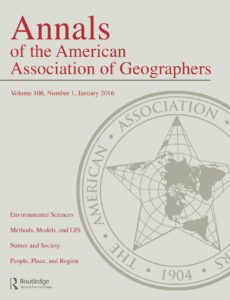
 “I was a thief. A mild thief, but a thief nonetheless. In 1996, the Binghamton Geomorphology Symposium held a series of talks on the topic of “The Scientific Nature of Geomorphology”. As a young a 23-year old graduate student, I registered and then covertly audio-recorded the talks from a cassette recorder hidden in my jacket pocket. Even though it wasn’t stated explicitly, I guessed that doing this would probably constitute theft of intellectual property. But I did it anyway…”
“I was a thief. A mild thief, but a thief nonetheless. In 1996, the Binghamton Geomorphology Symposium held a series of talks on the topic of “The Scientific Nature of Geomorphology”. As a young a 23-year old graduate student, I registered and then covertly audio-recorded the talks from a cassette recorder hidden in my jacket pocket. Even though it wasn’t stated explicitly, I guessed that doing this would probably constitute theft of intellectual property. But I did it anyway…”
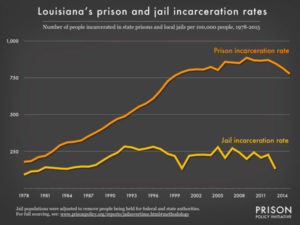
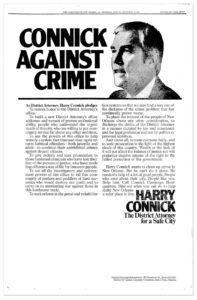



 Laura Akindo recently graduated from Frostburg State University with a Bachelor’s of Science degree in Earth Science with a Concentration in Environmental Science. She also majored in Geography. Laura is in the process of applying to Graduate Programs and hopes to begin working on her Masters of Science in the Fall in GIS and Environmental Management and Policy. In her spare time, Laura likes to read, visit new exciting outdoor parks, and watch soccer.
Laura Akindo recently graduated from Frostburg State University with a Bachelor’s of Science degree in Earth Science with a Concentration in Environmental Science. She also majored in Geography. Laura is in the process of applying to Graduate Programs and hopes to begin working on her Masters of Science in the Fall in GIS and Environmental Management and Policy. In her spare time, Laura likes to read, visit new exciting outdoor parks, and watch soccer.
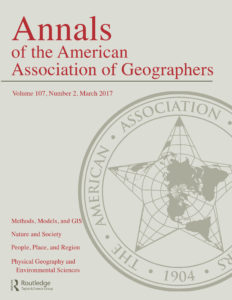
 The AAG began publishing
The AAG began publishing 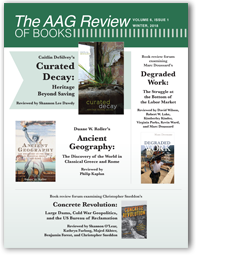

 Mei-Po Kwan, University of Illinois Urbana-Champaign
Mei-Po Kwan, University of Illinois Urbana-Champaign
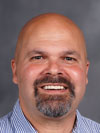 David Kaplan, Kent State University
David Kaplan, Kent State University Banu Gökarıksel, University of North Carolina Chapel Hill
Banu Gökarıksel, University of North Carolina Chapel Hill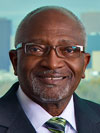
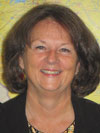 Susan Cutter, University of South Carolina
Susan Cutter, University of South Carolina Billie L. Turner, II, Arizona State University
Billie L. Turner, II, Arizona State University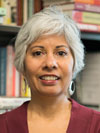 Laura Pulido, University of Oregon
Laura Pulido, University of Oregon